People are strange creatures capable of carelessly to care for capricious plants and completely not notice the unique beneficial properties of the "Longs" unpretentious cultures. This is the Irga. This shrub grows almost on every garden, but not everyone opens its wonderful properties. Meanwhile, the fruits of Irgi are able to treat the most common diseases, ranging from seasonal avitaminosnosis, ending with cancer prevention. In this article we will tell you how to plant IRGU on the plot, how to care for her and what benefit can be obtained from this plant.
General characteristics
IRGA ordinary is a fast shrub belonging to the family of rustic. Fruits are distinguished by a beautiful dark blue or magenta, depending on the variety. Irga is a long-lived and does not require much care. So, one shrub in vivo is able to live to 50 years, giving every year from 5 to 10 kg of berries every year. At the same time, the replacement of the stems in a few years come new.
The beneficial properties of the IRGI berry have long been known in folk medicine, but today few people have ever heard of such a plant. The composition of juicy pulp contains the mass of useful elements: sugar, a whole complex of vitamins, tannins, carotene, kumarins, pectins, etc.
At the same time, you only need to put it on the site and provide minimally comfortable conditions and care - then Irga will cope completely independently. It is not afraid of a strong drought, no wind, can grow on any soils (except for swampy) and well transfers the harsh Russian winters. Such endurance is explained by the morphological structure of the shrub - its roots go deep into the ground (2 m or more), receiving a maximum of nutrition from the bowels of the earth. IRGA can grow and give useful fruits even in urban conditions, where the air is strongly ridden.
Often an adult bush of Irgi is confused with a real powerful tree. From one base, up to 25 stems can grow, whose height sometimes reaches 8 m.
Beneficial features
IRGA (photo) is an excellent tool from seasonal avitaminosis and is used to prevent colds and viral diseases. If you regularly use IRGU, the chances of getting sick orz or flu are minimized. It is possible both in the fresh form and dry, frozen, in the form of jam, jam or compote. Even after heat treatment, the berries retain a large number of vitamins.
People suffering from or in the risk group of cardiovascular diseases are also recommended regularly eating Irgi berries. Thanks to the beta-sitosterone contained in them, the level of cholesterol in the blood is noticeably reduced. IRGA warns heart attacks, varicose veins, improves immunity, removes toxins from the body, and also reduces harm from the effects of electromagnetic radiation, which is extremely useful for all residents of large cities.
Contraindications to use
Despite the obvious benefit of the IRGI berries, it has a number of contraindications to use:
- As it reduces pressure, hypotonized is better to refrain from treatment with berries.
- The active substances in the composition can cause drowsiness, so take medicines with IRGA better for the night.
- Fruits increase blood coagulation, so they are not recommended to use people suffering from thrombophlebitis.
Important: If you collect IRGU in the forest, be careful and do not confuse it with a crash. The fruits are crazy can only be used a year after the collection, otherwise you can get strong poisoning.
Types of Irgi.
All the varieties of IRGI, and they are about 20, they are very similar to each other - everyone has white inflorescences with tassels, everything bloom almost at the same time, and the fruits differ only with a tint, fluctuating from violet to raspberry. True species of species are noticeable when considering the morphology of plants and are associated more with origin and sustainability to the terms of the Russian climate.
Irga Gladkaya
It is considered one of the most beautiful and elegant varieties. It is distinguished by wide spreader branches, foliage of a purple shade and hanging tassel inflorescences. Flochy dark purple berries come to replace the flowers, and the foliage is painted in bright reddish colors.
Smooth Irga was first discovered in the east of North America. In natural conditions, it can be found on the slopes of hills and dry forest glades. This is a big shrub, whose height can reach 5-10 m.
Features of growing:
- With seed growing, evidence occurs under the cold or at the beginning of spring. Pre-boarding material should be stratified at + 1 + 5C, however, this method is almost not used due to low germination.
- Irga's cuttings also takes good enough. Often, it is vaccinated on other varieties or rowan.
- It takes a drought well and almost does not require watering.
- It is not necessary for the winter.
- Good honey.
- May grow in urban conditions.
Irga Canadian
Pretty large shrub, whose height can reach 12 m. It is characterized by penetrating shoots of a reddish shade, white sophistication and dark purple berries. Often it is used for decorative purposes, since it blooms very beautifully, and closer to the autumn changes the color of foliage to the crimson.
Canadian IRGU is recommended for winter or early spring. It multiplies with cuttings, seeds, dividing bushes, vaccination or pig.
Features of growing:
- Before sowing, seeds should be stratified for 2-3 months at + 1 + 5 C.
- It is best propagated by rhizuy shoots and cuttings.
- Practically does not require watering.
- It tolerates the rejuvenating landing "on the stump", trimming and decorative haircut.
- Winter-hardy grade that does not require shelter.
- Fruit from the second half of July to August every year from the 5th age. The fruits are round, similar to miniature apples, very sweet.
- Good honey.
- May grow in conditions of a gasped urban environment.
Canadian Irga is also valued for its unique dense wood, which is perfectly polished and serves as material for the manufacture of interior items.
Irga Colosy
Because of its low growth, it is used at the same time as decorative, and as a fruit look. A characteristic distinctive feature is a whitish felt gun on the back of the young leaflets, on the tops of the umbreams and flowers. Unlike its "relatives" in the fall does not change the color of foliage on a bright purple, and the most beautiful thing looks in the period of fruiting, when all the branches are swept over clouds of juicy berries.
In the natural environment, the Cososestic IRGU can be found on gravel and stony coastal areas, ledges, rocks, dry threshers and mixed forests. Dimensions usually do not exceed 50-70 cm.
Features of growing:
- Propagated by a piggy, cuttings, seeds, dividing bushes.
- Seeds before sowing should strategy for 3 months. at a temperature of + 1 + 5c.
- With vegetative reproduction, approximately 60% of the cuttings are rooted.
- Like other varieties, tolerates drought well.
- Frost resistant (tolerate temperatures up to -50c), it should not be covered for the winter.
Irga Lamarka
The low bush, known for its beautiful umbrella crown and foliage of copper-red, which falls the tint on the orange. It is grown for decorative purposes and for delicious iscin-black berries.
Lamarka is a natural hybrid smooth and Canadian Irgi. The maximum height is 60-70 cm.
Features of growing:
- Per year, the bush grows about 25 cm.
- Surrive on any soils with a pH level from 5.6 to 7.5.
- Put a lammark at the end of autumn or early spring.
- Breaks up with cuttings, seeds, vaccine or pig (best of all cuttings).
- Seeds require stratification 3-4 months.
- Good honey.
- Frost-resistant.
- Sweet apple-like berries.
IRGA ovalnoliste (oval)
A small shrub tall up to 50 cm with whiten felt leaves and young escapes. He loves warm, tolerates drought well, so more suitable for southern regions of the country.
In natural conditions, oval IRGU can be found on the rocky oids, rocks, bright forest edges.
Features of growing IRGI:
- Sat in the middle of autumn or early spring.
- It is preferable to be treated with a good drainage to saturated soil. The more denser the earth will be, the less comfortable will be Irga.
- Plugs the pig, seeds or division of bushes.
- Sailing with seed reproduction is 30%.
- Seeds should be stated 3-4 months.
- Well tolerates decorative haircut and trimming.
- The shrub is able to overreim at temperatures to -29c without shelter.
- Fruit from July to August. Berries with a diameter of up to 10 mm very juicy and sweet.
Oval Irga has a powerful phytoncidal effect, so even finding next to the flowering bush can strengthen the immunity, not to mention the use of fruit.
Irga Olgoliste
This variety Irgi loves moisture, than and different from all the others. Also, it can also be found in lowered by young shoots with round sawd leaflets, yellowing in autumn. Fruits with large berries in large quantities (the diameter of the berry from 10 to 15 mm), which makes it a valuable fruit culture.
In the wild, there are on the shores of streams and rivers, on wet slopes and slopes of canyons. Usually low growth, but can reach 7-9 m.
Features of growing:
- The optimal time for landing is early spring and autumn.
- Propasses the division of bushes, piglets and seeds (better by rhizable shoots).
- Seeds are better driving after 6 months. Stratification.
- The cuttings are rooted pretty bad.
- Requires regular irrigation.
- Loves wet, but not swampy soils.
- Winter-hardy grade, but at very low temperatures, the tips of the shoots can be frozen.
- Fruit abundantly from 5 years from mid-July to August.
- Olgoliste Irga can grow in urban conditions.
Distinguish between several decorative forms:
- Rude Irga - with very large fruits up to 30 mm in diameter.
- Jack Amelasorbus is a natural hybrid with rowan. Can carry harsh winters.
Growing Irgi.
Despite the unique therapeutic qualities of IRGI, in many countries it is grown as a decorative culture to decorate the plots. And this is a logical explanation - the spring shrub is covered with mossworks of pleasantly smelling flowers, around which bees are pioneering, they come to change purple and blue fruits, and the foliage is transformed in the fall, staining the bush into the juicy purple colors. IRGA combines in itself and mustle for the eyes, and health benefits.
Landing and care for Irgoy is very simple, it is enough to ensure the proper conditions. The plant loves solar places on the south or western side. It grows on any soils, but weakly and fruits small berries on the poor dry ground. On one site, it is enough to plant a total of 1-2 bushs to provide yourself with useful stocks of vitamins for the whole year and decorate the landscape.
Soil preparation occurs on the same principle as for any berry crops:
- In the spring or autumn, the bushes are planted in a pocket with a depth of 40-70 cm with a diameter of about 50 cm.
- The average grades should be placed in a number of minima 2 m from each other, stronger - with a distance of 3-3.5 m with a width of rods of 4-5 m.
- In the first year after disembarking, any varieties are recommended to abundantly, especially if the summer was hot.
- Young bushes are feeding with a humorier or peat crumb.
- The ground part should be shortened to 10 cm, leaving over the soil to 5 developed kidneys.
- In the first year after landing, the increase will be insignificant, but after 2-3 years the bush will grow by 40-60 cm.
IMPORTANT: IRGA (especially spoosy) is distinguished by an abundant root pig, which must be constantly monitored. Also, do not put a bush next to the garden tracks or near the parking lot, since the juice from fallen berries can spoil the appearance of light stones and cars, and it is quite difficult to output it.
Irgoy care
A year after the landing, the IRGU should be filing with ammonium nither, bringing about 50 g of fertilizer into the soil. It is also recommended to add 100 g of superphosphate to the ground, evenly scattering it into the coil circles and slightly bursting. At the beginning of the spring, after making fertilizers, the land should be mulched by a humid or peat crumb.
The fruction of IRGI usually begins for 3-4 years, and from 5 years of age you can collect abundant yields of 5-10 kg from one bush (depending on the variety). During this period, additional feeding is required by organic (humid, compost) or mineral (ammonium nitrate, potash compositions) fertilizers. In the first year, minerals can be deposited, and the following is the organic, etc.
In order for Irga to please the eye and fruits well, it should be formed in the form of a bush, periodically removing weak shoots. In the first couple of years, leave only strong shoots so that the result is a bush of 10-15 powerful branches of different ages. Rejuvenating trimming must be carried out no more than 1 time in 3-4 years.
If the bush for the second year after landing develops weakly and slowly lags in growth, in the end of the spring it should be filled with nitrogen compositions, man-absorbing, bird litter or cow (dilute with water 1:10 and 1: 6, respectively).
Reproduction of IRGI
Depending on the variety of IRGI, cultivation and care occurs in different ways. Most species multiply seeds, root cuttings or vaccination. The seed method is mainly relevant for species forms. To get seeds, collect the fruits and leave for a few days in a cool place, then grind, remove the seeds and dry them in the shade. The seeds of Irgi are very small, so they hang them to obtain seedlings better in wooden or peat boxes with a light soil mixture (sand, derm, humus).
Before sowing, any seeds should be subjected to stratification in wet fine sand at a temperature of + 1 + 5c. If you sew the IRGU in the fall, cover the boxes in the garden and cover with leaves or spruce noodle. Bushes that have grown out of seeds, during landing should be shortened by 1/3 of length. The first crop will give for 3-4 years, and abundant fruiting will begin for 7-8 years of life.
The varietal IRG has multiplied with an extremely vegetative way, which allows it to maintain its therapeutic and aesthetic characteristics. At the beginning of spring or at the end of the autumn, dig root piglets or root cuttings up to 15 cm long and 1.5 cm in diameter. In the first summer, after planting, they must be abundantly watering, and the sprouts will turn into small sturdy bushes, which, depending on the degree of development, can be sent to the growing or land at a permanent place.
The vaccination reproduction is rare enough. The laying make from the Seedlings of Ryabina or the other variety of IRGI (it is better not to take IRGU not to get root pigs). Irga, grafted on Ryabin, grows moderately quickly, fruits early and very abundantly, plus it does not give root rigs, so that it makes it difficult to care.
Harvesting
Harvesting Irgi is the most pleasant and long-awaited part of the work. Since the fruits on the bushes are ripening gradually and at different times, you can collect them in several techniques, but it is better to wait for the whole bush.
IRGU should constantly take care of birds, which are also very like to be touched by sweet juicy berries. Drozda, Skvorts and Sparrows are able to completely destroy the entire harvest, so the bush must be covered with nonwoven protective material, for example, a large segment of gauze or a grid with small cells. It follows immediately after ripening the first berries and leave protection until the end of the fruit period.
The benefits that only one bush of Irgi can bring is invaluable. It decorates the landscape, induct the fragrant fragrance of colors in the spring and bestows therapeutic and delicious fruits in the fall. From the berries of Irgi make healing jams, boil compotes and even put in baking instead of raisins. It is able to prevent and cure many diseases, strengthen the immune system and just raise the mood.

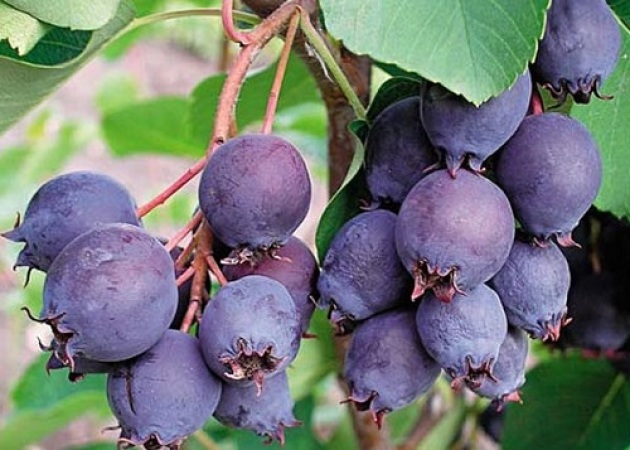
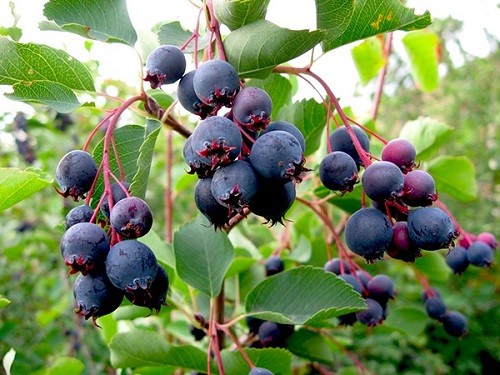
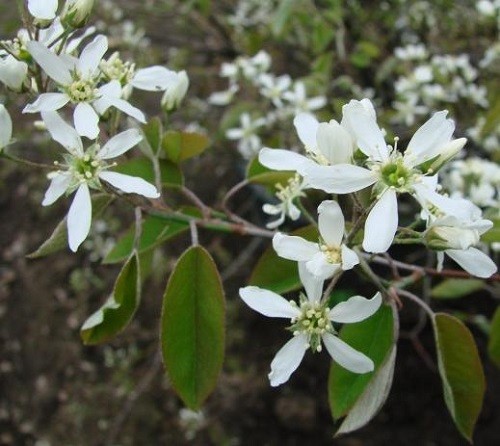
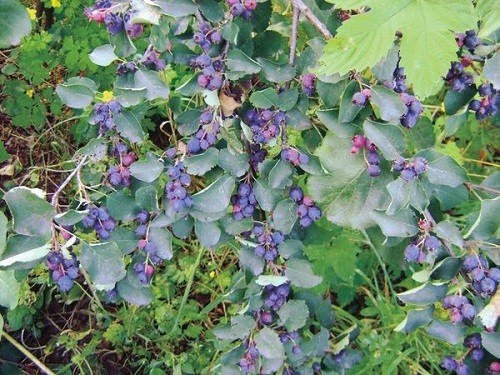
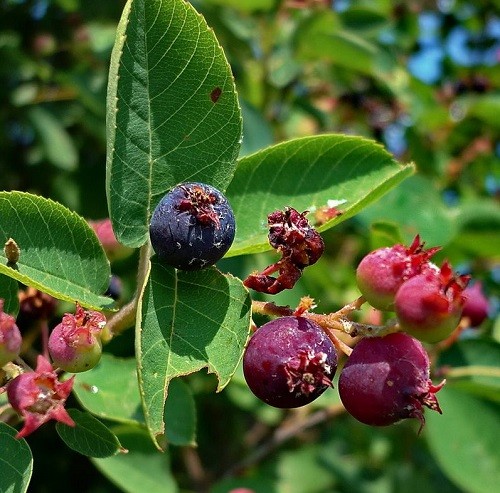
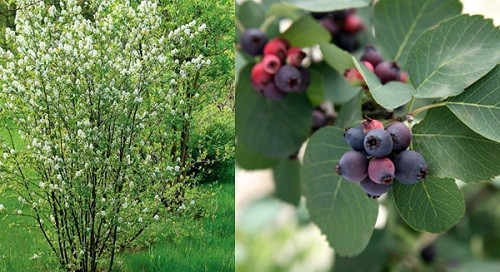
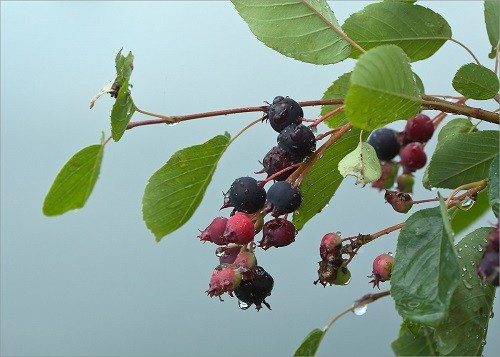
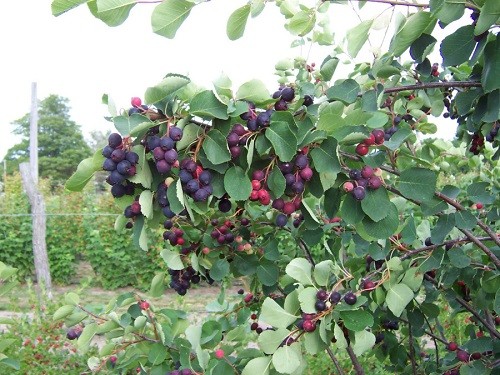
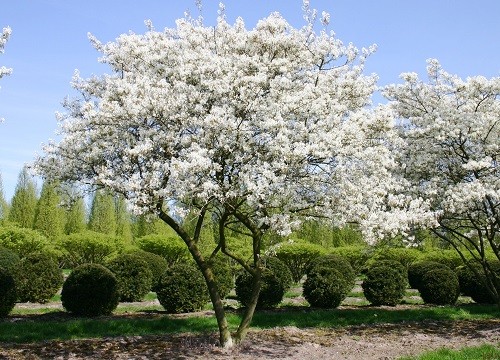
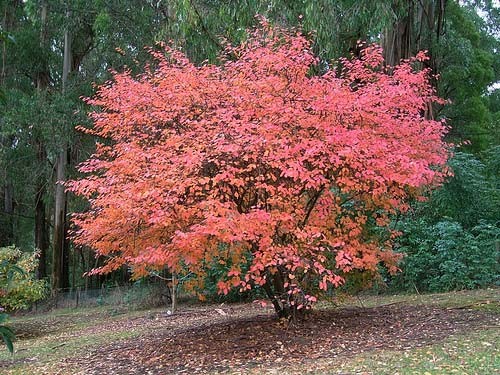
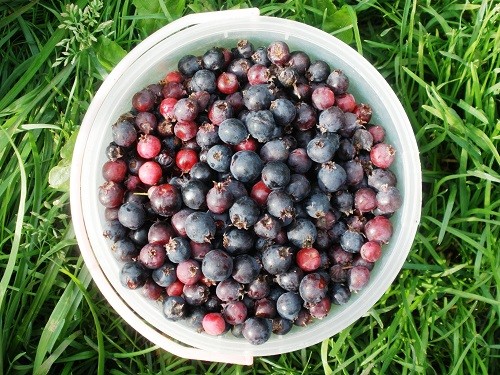
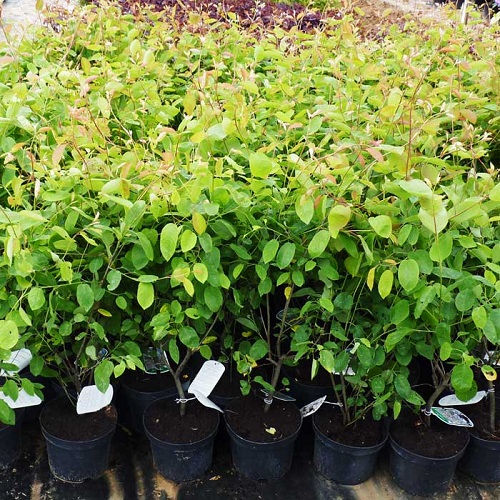
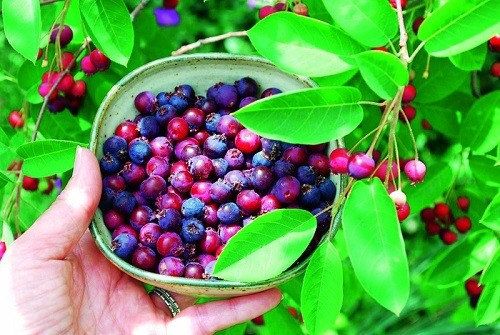












 Start a discussion ...
Start a discussion ...